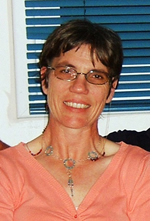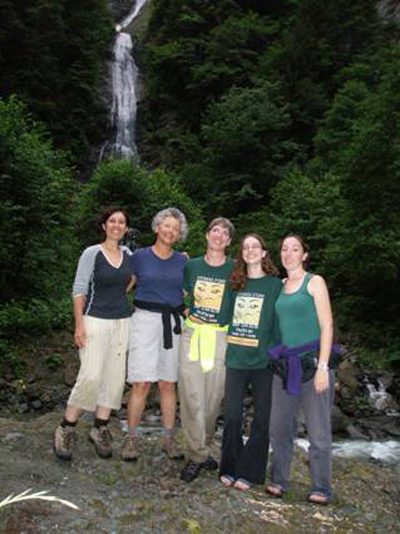|
By Ulla Hadar
 KAÇKAR MOUNTAINS, Turkey—The months of July and August my late father always referred to as the cucumber season. Whether this term comes from the time of harvesting the cucumbers I do not know. In my childhood this time was spent relaxing, enjoying the Summer holiday, leisurely walking in the bright evenings through the Danish countryside, driving in the car to watch the sunset and eating a lot of ice cream. They were months with KAÇKAR MOUNTAINS, Turkey—The months of July and August my late father always referred to as the cucumber season. Whether this term comes from the time of harvesting the cucumbers I do not know. In my childhood this time was spent relaxing, enjoying the Summer holiday, leisurely walking in the bright evenings through the Danish countryside, driving in the car to watch the sunset and eating a lot of ice cream. They were months with
few events but with great excitement. It was a time that the family enjoyed each other's company.
In Israel the months of July and August are among the hottest ones of the year and also the time where families go for a holiday together either in Israel or to a foreign destination.
Our family is no different and this year the choice was between
treks in Georgia ,Turkey or a week in Lapland with sleepover in
an igloo. The majority of the family went for the trek in the Kaçkar mountains located in the Northern area of Turkey
(guess who was voting for the trip with the igloo!!).
We joined an organized trip with the Medraft company. The group of thirteen participants, included five members of my family as well as my eldest daughter's boyfriend.
The highlight of the trip is a trek to the Kaçkar-Kavron summit, situated at an altitude of 3937 meters, (12,933 feet). This is the highest point in the range.
Transportation in this area is done mostly in Dolmushim, a small
van capable of carrying between 14-18 people. Because of their size they are able to pass through rough dirt roads and reach the small villages scattered around the mountain range .
Some of our equipment was transported by mules to the base camp of Dilberduzu, where we were to sleep for two nights. The group walked the twelve kilometer distance from the village of Olgunlar through a valley covered with beautiful wild flower and a river splashing next to us.
The group settled in the tents put up for us. Turkish guides accompanied the trek, because it can be dangerous to do the walk to the summit on your own, in case of fog, rain or other bad weather.
The Kaçkars rise in between the shores of the Black Sea to the north and the River Coruh valley to the south. On the northern flank, a wide variety of wildflowers grow in the rainy climate. Much of the area is cultivated by the local people who grow tea, citrus orchards, fruits and grape vines. Much of this area is a national park and has an extensive collection of native flora and fauna. The trek is not easy because extensive glacier and water erosion have given these mountains a craggy, rugged surface which is not easy to deal with when climbing up or down. Adding to the difficulty is the fact that the air gets thinner the
higher you climb.
At 4 a.m. everyone got organized in the freezing cold mountain air, and the trek started out at 5 a.m.. First stop was at the Lake Denizgulo, a funny name, because in Turkish "deniz" is "sea" and "gulu" is "lake," so the name is equivalent to "sealake." The walk up to the lake had taken its toll of some of the participants and the group split so only ten continued towards the summit with one local Turkish guide and our Israeli guide. When you look up towards the summit, the distance does not seem far and you believe it won't take long to get there, but the higher you climb the slower your steps and the more labored your breathing. We walked in a snake line. We navigated several difficult obstacles: snow passages, rocks, and steep ascending and descending slopes. One of the obstacles was named the "death wall" by the participants, as it was a wet and difficult rock passage where everyone had to cling on to the stones in order not to slip and fall.
The weather was splendid with clear sky and beautiful sunshine.
Not everyone reaches the summit because you can be deterred by rain, fog, or lack of time. It's imperative to get back down
before darkness.
Go to the top of right column
|
|

After more than six hours climbing the group reached the spot where a Turkish flag indicates the peak. Everyone felt satisfied
That we had reached our goal. A small guest book lies in a metal cupboard on the summit for all climbers to sign their names. Quickly looking through the pages, you realize that approximately a third of the trekkers are Israelis. The Kaçkar
Mountains is a very popular site for Israelis which we soon understood hearing Hebrew being spoken around us.
One of the participants in our group was Stav Zimmerman who did the trek together with his father Oz Zimmerman. Stav decided last year that he wanted to do his bar mitzvah conquering the
Kaçkar mountain. He reached the peak with the group one day before that milestone birthday,
Climbing back down to base camp was no easier than coming up. The legs are tired and the body starst to feel the effects of its recent efforts. Finally we reached the camp at 5 PM, tired but satisfied.
In the days following the climb, we did other treks in the
area, including a trip to the monastry of Sumelas, visits to two waterfalls and a trip crossing the mountain ridge from Olgunlar to Yukari Kavron. Thistrek goes through the flowering valley and reaches the passage of Geçidi at 3,350 meters. We were to visit two lakes but we were interrupted by a storm. We had to move fast to escape the thunder and lightning.
Except for finding the names of many Israelis who had preceded me to the summit,
I did not succeed in establishing any Jewish connections in the area of Kaçkar.
The approximately 50,000 Jews remaining in Turkey are mostly situated in Istanbul and Ishmir. I do not know why there have been no Jewish settlers in this area of the country, because a main trade route goes through a pass here and the border of Georgia is very close to this mountain range. In Georgia, many Jews can still be found.
This visit was my first to Turkey and I enjoyed every bit of it. I think the area of Kaçkar is extremely charming because it is still very authentic and rustic. The villages have not been spoiled by souvenir shopsor modern equipment. You see the villagers work and live as they have done for decades. There are small pensions and hotels that are in keeping with the environment. The local stores are simple and primitive.
|

